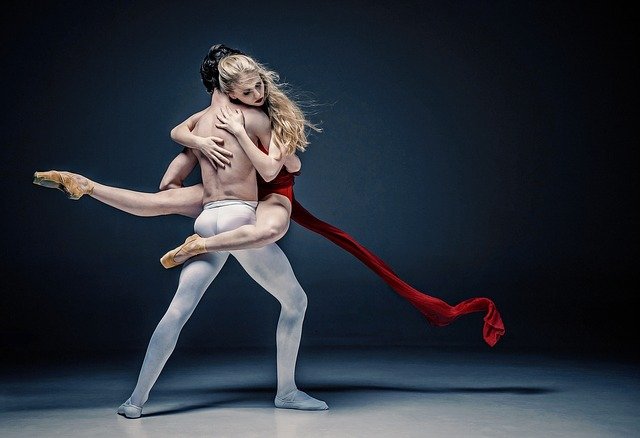Язык постоянно развивается, и ориентироваться в нем может быть сложно по целому ряду причин. Если вы не являетесь носителем языка, грамматические правила нового языка могут сбивать с толку. Если вы пытаетесь овладеть английским языком, это может быть вдвойне благодаря гендерно-специфическим терминам, которые не всегда существуют в каждом языке и иногда настолько малопонятны, что даже большинство носителей английского языка не знают о них.
10. Нимфомания специфична для женщин

Слово «нимфоманка» не так уж часто встречается в повседневных разговорах, но оно знакомо большинству людей. Ларс фон Триер использовал его в качестве названия фильма, а 50 Cent лихо включили строчку «если ты будешь нимфоманкой, я буду нимфоманкой» в песне Candy Shop. Но, увы, г-н Сент использовал этот термин неправильно, поскольку он не учел гендерную специфику термина.
Определение нимфомании применимо только к женщинам, то есть 50 Cent не может быть нимфоманкой, строго говоря. Слово, означающее безумие нимфы, было названо в честь мифологических нимф, которые были лесными духами женского пола. Однако существует и мужская версия этого термина — сатириазис. Сатиры, как и нимфы, тоже мифологические звери, но они известны тем, что у них нижняя половина козла. Пан был самым известным из них, и с ними связана история разврата.
Говоря современным языком, мы могли бы использовать такие термины, как гиперсексуальность или сексуальная зависимость, чтобы относиться к этим терминам гендерно-нейтральным образом.
9. Только женщины брюнетки

Мэрилин Монро сыграла главную роль в фильме 1953 года « Джентльмены предпочитают блондинок», в котором она и ее подруга-брюнетка сыграли Джейн Рассел. В конце фильма и блондинка, и брюнетка женятся, так что, возможно, это был спорный вопрос. Но помимо этого вы заметите, что слово «блондинка» пишется с буквой «е» на конце. Если бы название относилось к мужчине, этого бы там не было. Блонд без «е» относится к мужскому цвету волос. Несмотря на то, что произношение одинаковое, написание разное. И не только блондинки и блондины подвергаются гендерному лечению, но и брюнетки .
Брюнетка с суффиксом «этт» — женская форма слова. Технически шатенка можно было бы назвать брюнетом . Произношение, например, блондин против блондина, остается прежним, поэтому, если вы не увидите его написанным, вы вряд ли поймете, что есть разница. Это слово не часто используется в английском языке, и на самом деле, шатенка, кажется, является предпочтительным способом обозначения брюнета, в то время как брюнетки по-прежнему предпочитают женщины.
8. Синяя Борода — черная вдова мужского пола.

Благодаря кинематографической вселенной Marvel всем известно имя Черная вдова. Если вы не знали паука, носящего это имя, вы знаете персонажа Скарлетт Йоханссон. Но есть и третья Черная вдова, которая также довольно хорошо известна, и это та, которая относится к женщине, которая соблазняет и выходит замуж за мужчину, а затем убивает его, как правило, чтобы забрать его богатство.
Имя очень явно относится к чему-то женскому, но в какой-то момент была придумана и мужская версия термина. В мире паукообразных или насекомых не так много самцов, которые убивают своих самок так, как это делают пауки, поэтому этимология этого слова немного более необычная. Термин для человека, который соблазняет, женится, а затем убивает своих партнеров, называется Синяя Борода .
Название происходит от известной сказки конца 1600-х годов об одноименном мужчине, у которого есть комната, полная трупов его бывших жен. Этот образ довольно часто появляется в художественной литературе, но, возможно, не так часто, как Черная вдова.
7. Существует мужская версия пумы

Несколько лет назад слово «пума» вошло в обиход как термин для пожилой женщины, интересующейся молодыми мужчинами. Кажется, это произошло примерно в 2002 году в Канаде и распространилось оттуда. По счастливой случайности, есть также термин, используемый для описания мужчины, который ведет себя подобным образом, что означает, что он заинтересован в соблазнении более молодых женщин. Такого человека называют носорогом.
Термин не такой старый, как пума, но он существует уже несколько лет. В статье 2009 года на эту тему в Городском словаре уже есть статья по этой теме. Можно возразить, что «Городской словарь» вряд ли можно назвать научным источником, но гендерно-специфические термины для пожилых людей, которые хотят общаться с молодыми людьми, вряд ли можно назвать научным.
Одна из причин, по которой этот термин, по-видимому, не был так широко распространен, как пума, заключается в том, что, хотя пума почти используется как почетный знак и вызывает кошачьи образы, которые обычно являются чем-то приятным и женственным, слово носорог было выбрано специально потому, что это относится к тому, кто, и это цитата, «и похотливый, и уродливый».
6. Android относится только к роботам, которые выглядят как мужчины

Андроиды уже много лет являются основным продуктом научной фантастики. Робот может выглядеть как угодно, но андроид определенно выглядит как человек; это может даже обмануть вас. Данные из «Звездного пути» и «Бишоп» из «Чужих» — это андроиды. Но Присс из фильма «Бегущий по лезвию» или ТХ из «Терминатора 3» — не андроиды. Андроиды, хотя и выглядят как люди, также являются исключительно мужчинами. Если женщина-робот может сойти за человека, то технически она гиноид. Неуклюже звучащее слово, возможно, является причиной того, что оно используется не так часто.
В реальной жизни большинство созданных нами роботов гендерно нейтральны, склоняясь к тому, чтобы быть мужчинами. Было разработано несколько роботов женского пола, но они часто также ассоциируются с секс-куклами . Даже в художественной литературе гиноиды часто в некоторой степени преувеличивают свою сексуальность.
5. Балерина — это танцор балета.

Если бы вы представили в своей голове балерину, очень вероятно, что вы представили бы в воображении образ молодой женщины в балетной пачке, танцующей на цыпочках. Образ классической балерины не сильно изменился за последние годы. Есть даже картины 1600-х годов, на которых изображены танцоры в костюмах, которые сегодня не выглядели бы неуместно. Одним из ключевых отличий было то, что в то время женщины, как правило, носили гораздо более длинные платья. И это вызывает различие. Балерина, как мы бы использовали этот термин сегодня, вовсе не относится к танцору-мужчине ; это зависит от пола для танцовщиц.
Термин «танцор балета» вполне приемлем, и его часто можно услышать, когда кто-то обращается к танцору-мужчине. Но, строго говоря, танцовщица — это балерина, а танцор-мужчина, следуя условностям того, как в итальянском языке учитываются гендерные различия, — балерина .
4. Существует женская версия фаллических образов

Зигмунд Фрейд очень много сделал для мира фаллических символов, нравилось ему это или нет. По сей день иногда люди действительно задаются вопросом, является ли сигара просто сигарой. Все, что отдаленно напоминает пенис, может считаться фаллическим символом, и в книгах и статьях было много слов, посвященных тому, означает ли это что-нибудь. Все, от оружия до автомобилей и небоскребов, в то или иное время считалось фаллическим. Возможно, за всем этим стоит какая-то психология. Или, может быть, что-то длиннее, чем в ширину, — это просто очень распространенная форма. Кто знает?
Несмотря на все разговоры о фаллических символах, возможно, стоит отметить, что, поскольку этот термин, очевидно, относится к определенному гендерному образу, у него есть и обратная сторона. Йонические образы являются женским эквивалентом и относятся ко всему, что можно сравнить с женскими гениталиями.
Название происходит от санскритского слова йони, что означает чрево. Это часто ассоциировалось с такими вещами, как цветы , метафора, которая используется до сих пор и которую вы можете найти в картинах, стилизованных под женскую анатомию.
3. Дудетт изначально не был парнем женского пола

В 1990-х слово «чувак», возможно, было одним из самых используемых сленговых терминов в западном мире. Может быть, это было из-за культуры серферов или черепашек-ниндзя , но она дожила до наших дней и до сих пор очень часто выбрасывается. Это простой термин, который по сути просто означает «мужчина», хотя вы можете немного поиграть с контекстом и использованием.
Наряду с чуваком был гораздо менее популярный термин, используемый для обозначения женщин, и это дудетт. Опять же, вы можете найти это в Черепашках-ниндзя-подростках-мутантах, когда Микеланджело использовал этот термин в фильме 1990 года. К сожалению, вы никогда не должны рассчитывать на то, что антропоморфная черепаха будет лингвистически точной, потому что дудетт не является женской версией чувака, или, по крайней мере, изначально не была таковой.
Если вы вернетесь назад, «чувак» не относился к черепахе, серферу или даже ковбою на ранчо для чуваков. В 1800-х годах чувак был « привередливым человеком ». Значит, это был мужчина, озабоченный своей внешностью. Женская версия была известна как dudine , и это также перешло на использование на Диком Западе слов dude и dudine.
2. Полигамия и полиамория — гендерно-нейтральные термины.

За последнее десятилетие или около того в Интернете появилось несколько статей о людях, практикующих полиаморию. И, конечно же, полигамия иногда идет рука об руку с этим. Полиамория — это практика наличия нескольких романтических партнеров, в то время как полигамия включает несколько супругов. Но оба эти термина гендерно нейтральны и могут относиться к кому угодно. Если вы хотите большей конкретики, существует гендерный термин как для мужчин, так и для женщин, которые вступают в отношения с несколькими людьми.
Полиандристка – женщина , имеющая несколько мужей. Оборотная сторона — полигинист, то есть мужчина с несколькими женами. Обычно, когда вы слышите о полигамистах, технически это полигинисты, поскольку мужчины, кажется, делают это намного чаще, чем женщины в наши дни, хотя в прошлом это было гораздо более распространенным явлением.
Вероятно, вы можете предположить, что если это человек, имеющий отношения с людьми более чем одного пола, вы можете просто вернуться к полигамии или полиамории, чтобы все было легче понять.
1. Интернет считает кошку Молли

Tomcat — один из тех терминов, которые, кажется, знают все, даже если вы не можете вспомнить, где и когда вы впервые узнали о нем. Любой кот-самец, расхаживающий по окрестностям, обычно считается котом. Это настолько общепринятый термин, что о нем буквально сняли мультфильм: Том и Джерри .
Котят называли котами еще в 1300 году . Нынешнее использование, кажется, восходит к 1800-м годам, а вариации уходят гораздо дальше. Но кот — это исключительно кот-самец, а для самок есть термин, который используется гораздо реже, по крайней мере, в Интернете.
Имя кошки, согласно многим веб-сайтам, молли . Конечно, в то время как на одном сайте говорится, что молли — это только стерилизованная самка, на другом сайте молли — это нестерилизованная кошка, у которой нет котят . А на другом сайте может быть сказано, что это термин буквально для любой кошки женского пола .
Ни один сайт, похоже, не может объяснить этимологию имени молли в отношении кошек. Но сейчас это стало настолько распространенным, что, даже если оно выдумано, кажется, что все с ним согласны.




